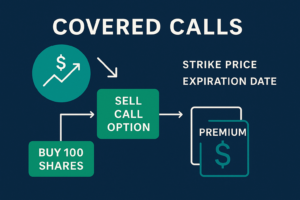We barely notice the way money moves.
Autopay does the thinking. Subscriptions do the taking. And somewhere along the line, authorship—once a mark of creativity—became backend churn. We’ve accepted revenue flow as background noise: silent, fixed, necessary.
But what if collections—the part of business we outsource to silence—could be reimagined as a vessel for creativity, trust, and microeconomic justice?
This isn’t a thought experiment. It’s a re-routing.
Lived Systems and Moral Design
I spent a lot of time critically thinking about formulary construction, share shifting, and drug access. These weren’t abstract concepts—they were real decisions affecting real people, with benefit dollars and treatment options on the line. The stakes in managed care are high, and every choice—what’s preferred, what’s blocked, what’s buried behind step edits—is a form of invisible architecture.
And sometimes, even the best intentions get tangled in invisible forces. In managed care, I saw how net cost dynamics could quietly shape behavior. A sponsor might cover a patient’s copay entirely—not out of generosity, but because the plan’s structure makes a costlier drug easier to access than a more affordable one. What’s “cheaper” depends on your vantage point. And patients, like most consumers, don’t always have the same levers to pull.
That’s the lesson: choice architecture is everywhere.
And if we choose to, we can inject it with the very virtues we claim to uphold—kindness, generosity, and accuracy.
The Invisible Script Beneath Every Transaction
Most billing models weren’t designed with trust in mind. They were designed to reduce friction, to ensure continuity, to minimize loss. Efficiency became architecture. But efficiency, left alone, becomes a form of amnesia.
We forget that every invoice carries not just a number—but a signal.
Who benefits? Who controls? Who belongs?
Billing is not neutral. It shapes how businesses are built, what behaviors are prioritized, and who is systemically excluded. Opaque collections lead to opaque relationships. Auto-renewals foster auto-dissociation.
We have optimized for seamlessness—at the cost of sovereignty.
Introducing the Tributary Model
Where traditional billing systems concentrate revenue like a dam, tributary billing systems circulate it. They treat collections not as endpoints, but waypoints in a network of creative trust. Tributaries nourish the whole.
In this model:
- Revenue is directional, not extractive.
- Contributors—whether creators, learners, or community members—are part of the circulatory loop.
- Control is not seized but shared, through predefined margins set aside for cooperative reallocation.
Examples in Practice:
- A course creator lets learners allocate 10% of their payment toward tools or translations for future cohorts.
- A newsletter caps its monthly profit beyond sustainability, with surplus routed to contributors, fact-checkers, or tool builders.
- An open-source project offers voluntary billing that includes fractional authorship for localization, testing, or security audits.
In each case, payment becomes participation, not just permission.
Billing is often the most forgettable part of business. What if it became the most cooperative?
The Economic and Moral Rationale
At its core, tributary billing is a response to microeconomic injustice—the phenomenon where those who sustain a system receive no claim to its direction or surplus.
When consumers, collaborators, and contributors have no stake in the upside, trust erodes. This isn’t just about equity—it’s about architecture.
- Extraction creates distance—between value and voice.
- Circulation creates coherence—between transaction and transformation.
This isn’t a loyalty program. It’s not a discount game. It’s a design for aligned incentives and authorship-as-default.
Instead of behavioral pricing engineered to increase spend, we explore participatory pricing that prioritizes alignment and clarity.
Instead of flattening people into “users,” we reintroduce agency at the point of payment and develop “benefactors”.
In tech terms, tributary billing mimics edge compute or CDN logic:
Just as distributed content improves performance and resilience, distributed value improves adaptability and trust.
Rewriting the Paradox of Thrift
Keynes once warned that saving too much would stall the economy—a feedback loop misaligned with growth.
Today, we live a different paradox: participating without owning. Consumers wear brands, evangelize them, shape their cultural value—and still have no stake in their direction.
If participation doesn’t yield ownership, then creative energy is misallocated. Dignity is drained. And ecosystems degrade.
Tributary billing offers a counter-architecture:
- Allocate a fixed % of margin into co-ownership.
- Embed this into billing systems—not as a perk, but as a principle.
- Let the checkout affirm dignity, not dissociation.
We don’t need gamified rewards.
We need representation.
We already have the infrastructure to embed equity into transactions. What we’ve lacked is the moral framing.
No more extraction. No more taxation without representation.
Call to Builders: You Are the Tributary
This isn’t theoretical. It’s executable. And it’s a call.
To technologists, educators, founders, artists, and systems designers:
- You can design systems that circulate meaning and value simultaneously.
- You can make billing a place of dignity, not just automation and extraction.
- You can build ecosystems where payment is a signal of shared authorship, not passive consumption.
A tributary doesn’t seek power. It brings life to what would otherwise be dry.
This is your chance to reroute. To move money in a way that mirrors how trust should flow—forward, outward, and together.
So ask yourself:
What if every invoice carried not just a price, but a promise—to grow something together?
And maybe, without knowing it, we’ve also found a new way to think about the velocity of money. Not as a metric for stimulus, but as a moral indicator of how alive an economy feels to the people moving through it. When money sits, hoarded and silent, systems harden. But when it circulates—authentically, transparently, with cooperative intent—it becomes something else entirely. A form of economic resonance. A mirror of shared movement. The future of billing isn’t just cooperative. It’s alive.








